Executive summary
Most accuracy problems come down to four buckets: installation, fluid properties, device faults, and external interference. Use the triage table below, then follow the corrective actions.
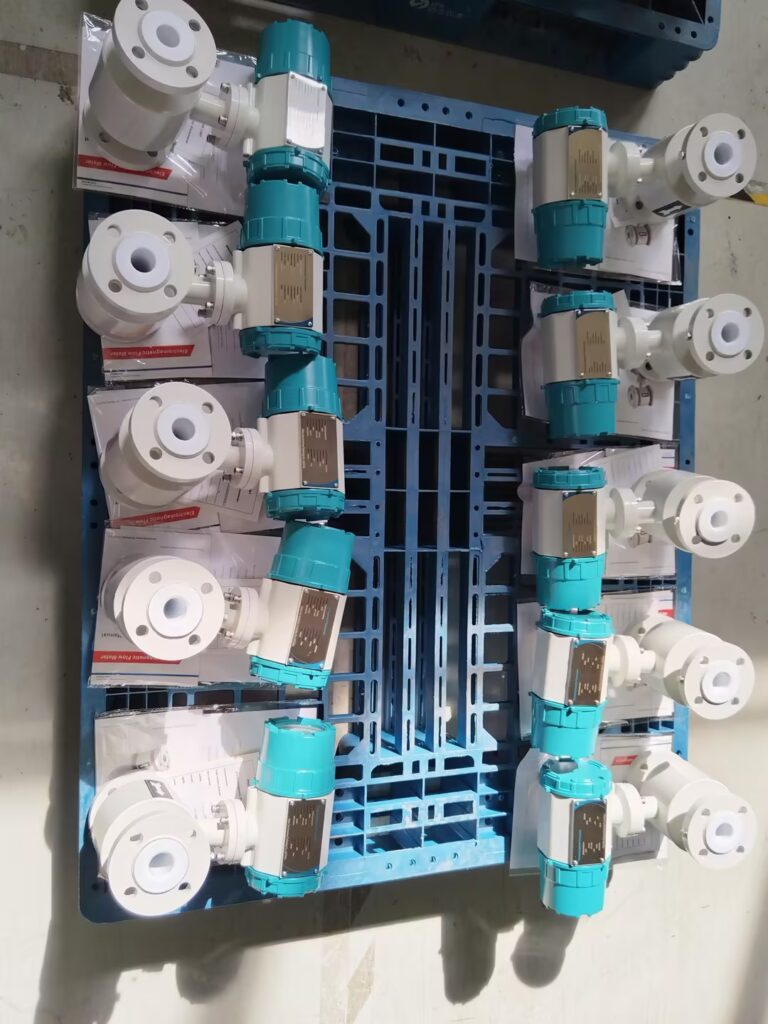
1) Rapid triage (symptom → likely cause → how to check → fix)
| Symptom | Likely cause | How to check | Corrective action |
|---|---|---|---|
| Reading drifts / unstable | Not full pipe; air bubbles | Look for gurgling, intermittent zero; inspect upstream vents | Ensure full pipe; add air vent upstream; throttle valve downstream |
| Consistently high/low vs. reference | Wrong diameter/scale in converter | Compare converter setup vs. actual line size/flow range | Re-enter pipe ID, range; perform zero calibration (full pipe, no flow) |
| Intermittent spikes | Poor grounding / VFD noise | Measure ground loop; note proximity to VFDs/transformers | Separate protective grounds; ≤10 Ω; route cables away from noise sources |
| Near-zero on conductive service | Electrodes fouled | Inspect electrodes; look for scale/oil films | Clean with soft cloth or mild acid compatible with material |
| Output saturates at max | Flow exceeds range; wrong K-factor | Compare process flow vs. configured span | Increase range or use larger meter; correct configuration |
| Reading only at high flow | Low conductivity fluid | Check conductivity (>~5 µS/cm needed) | Switch technology (e.g., ultrasonic) or adjust process chemistry |
| Random dropouts | Coil/lead faults | Measure coil resistance (per datasheet, usually tens of Ω) | Repair wiring; replace sensor/coil if out of spec |
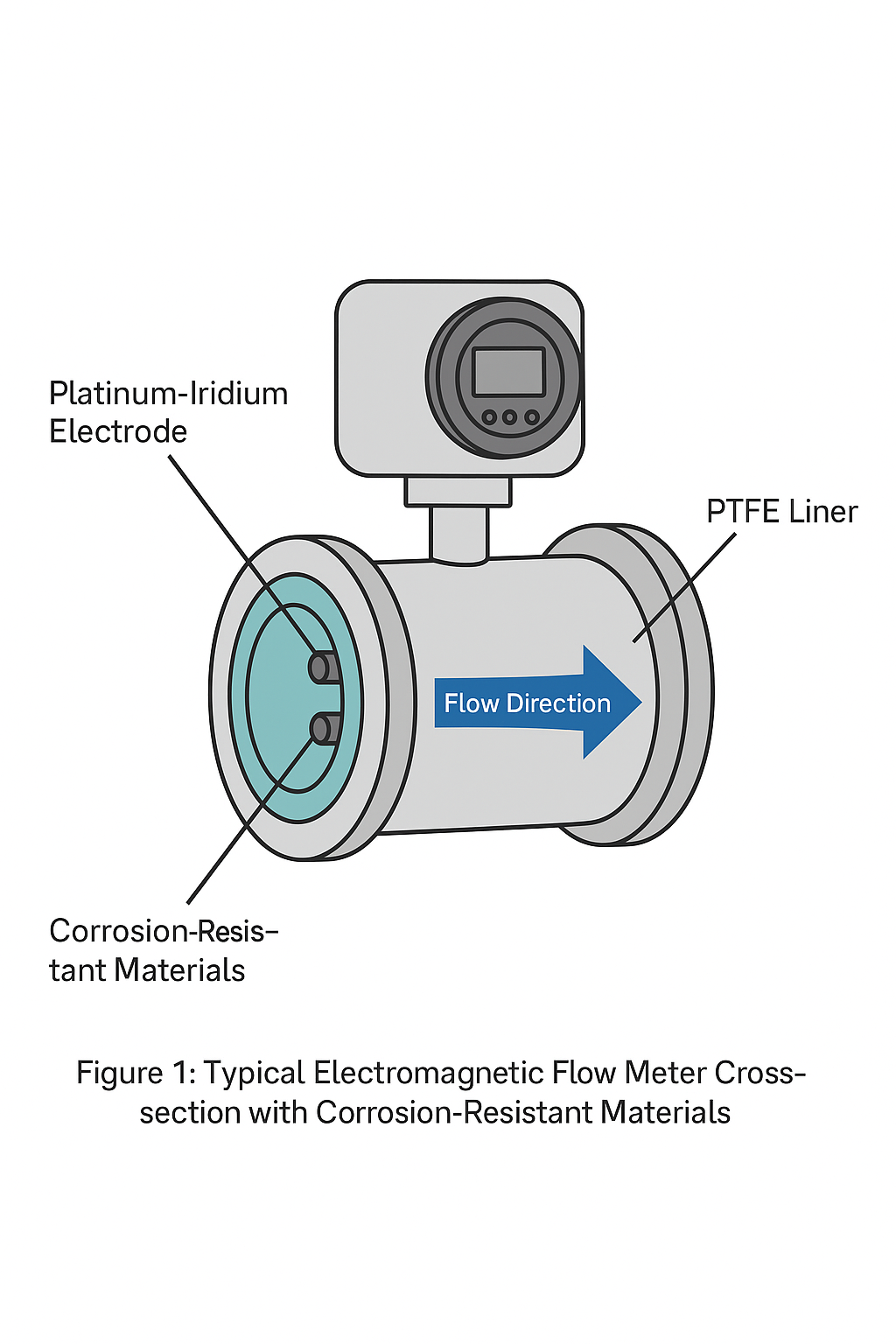
2) Installation issues (most common)
Electrodes not orthogonal to flow
Ensure the electrode axis is perpendicular to flow. On horizontal runs, keep electrodes on the horizontal centerline to avoid gas/slag accumulation. Re-align the body if needed.
Pipe not running full
Re-grade pipe or relocate meter; add upstream air release and a downstream restriction/valve to maintain backpressure so the meter is always flooded.
Poor grounding / bonding
Give the sensor and converter their own protective ground (separate rods if possible, spacing >5 m). Target ground resistance ≤10 Ω. Bond liners or grounding rings as specified.
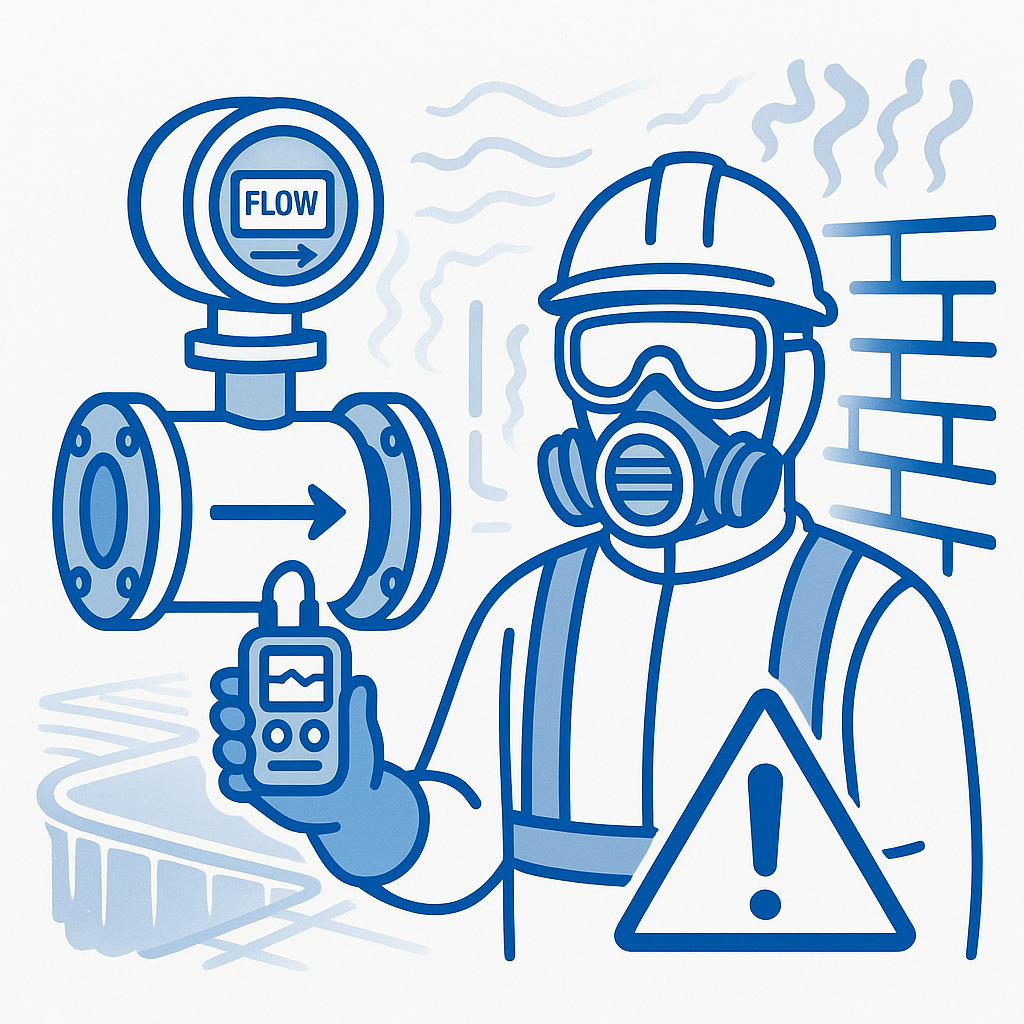
3) Fluid property mismatches
Conductivity too low
Magmeters need a conductive medium (rule-of-thumb >~5 µS/cm). Oils and ultra-pure water may not work—use ultrasonic/Coriolis instead or change process chemistry if acceptable.
Entrained gas or solids
Fit strainers/filters and gas separators; ensure straight, bubble-free approach. Schedule electrode cleaning every 3–6 months in fouling services.
Excess viscosity / high velocity
For viscous media, use a larger bore to reduce velocity and shear layers; keep working velocity in the 20–80% of span sweet spot (typical max ≤ 10 m/s).
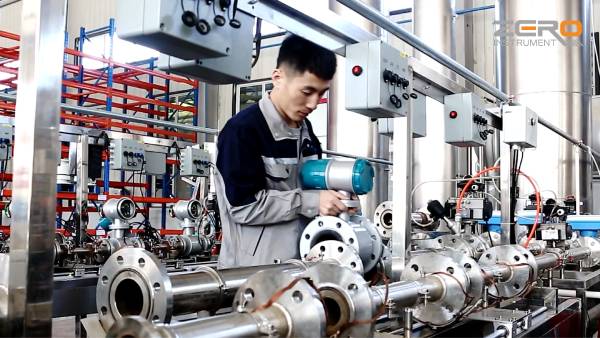
4) Device faults & misconfiguration
Electrode scaling or wear
Clean de-energized using compatible methods (e.g., mild acid for mineral scale; avoid attacking electrode material). Replace if pitted or eroded.
Wrong converter parameters
Verify: line size, range, outputs (pulse/4–20 mA/RS-485), pipe material/lining settings. Do a zero trim with the pipe full and static.
Coil/wiring issues
Check coil resistance (datasheet value, typically tens of ohms). Inspect connectors for looseness and moisture ingress; replace faulty parts.

5) External electromagnetic interference
Keep the meter/cables away from strong fields (VFDs, large motors/transformers). If relocation isn’t possible, use a grounded metallic shield enclosure and segregate signal cables from power. Maintain ≥2 m spacing where practical.
6) Commissioning & maintenance checklist
Before startup
✅ Straight run and orientation verified; electrodes on horizontal axis for horizontal lines
✅ Always-full condition ensured (vent upstream, valve downstream)
✅ Independent protective grounds installed (≤10 Ω), shield drain grounded at one end
✅ Converter parameters match nameplate and process (ID, range, output scaling)
✅ Noise sources identified; cable routing separated from power/VFD trunks
Routine care
🗓️ Inspect/clean electrodes every 3–6 months in fouling services
🗓️ Verify zero (full pipe, no flow) quarterly or after maintenance
🗓️ Periodically re-torque flanges and re-test ground resistance
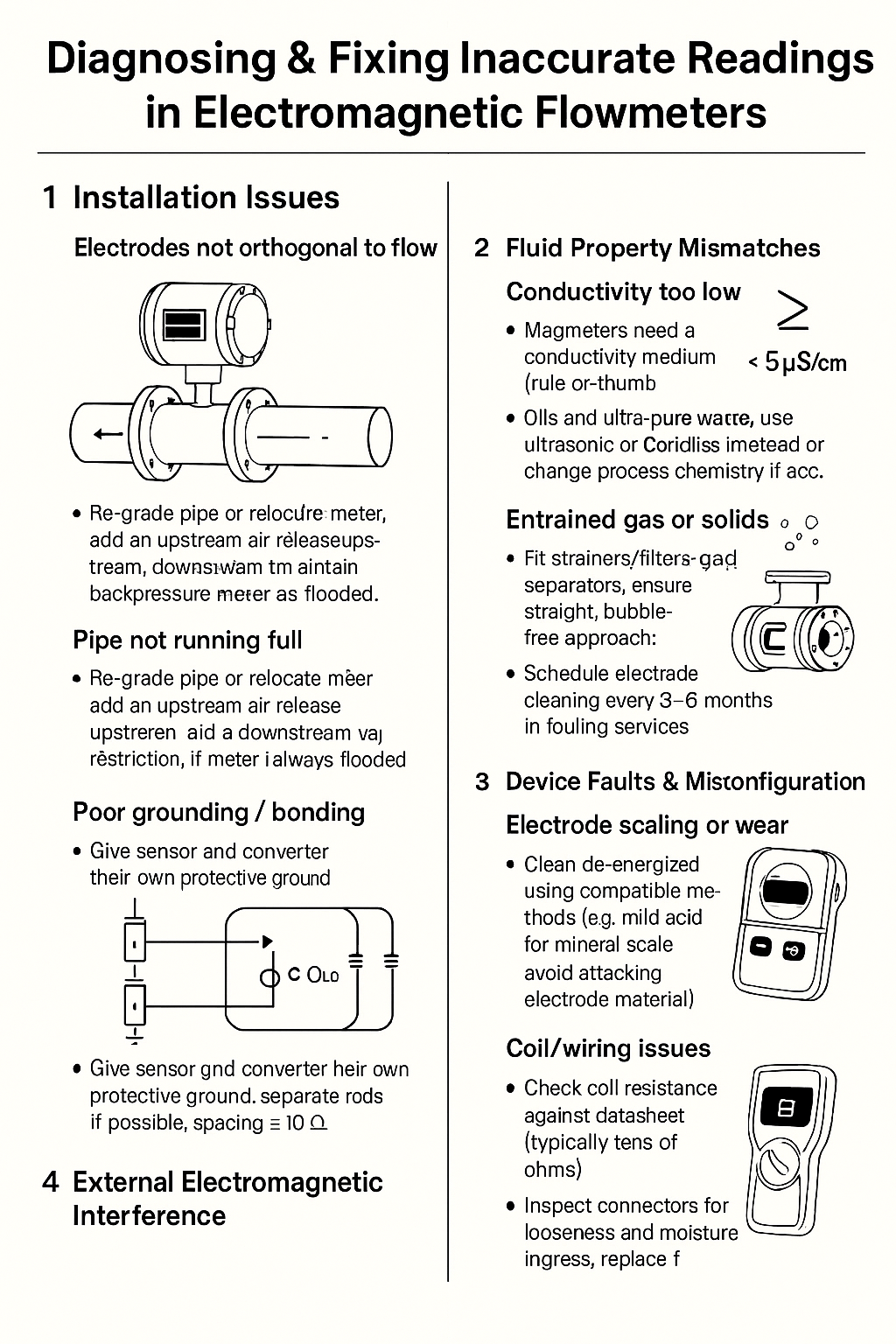
Field test procedures (quick references)
Zero check — Full pipe, pumps off, valves closed. Output should be 0 within spec. Adjust zero if drifted.
Coil continuity — Isolate and measure coil resistance; compare to spec. Replace if out of range.
Noise isolation — Temporarily power from a clean circuit, bypass VFD, or run on UPS to see if noise disappears. If yes, improve shielding/grounding and cable segregation
